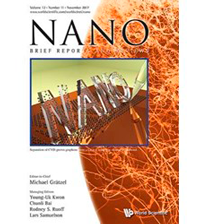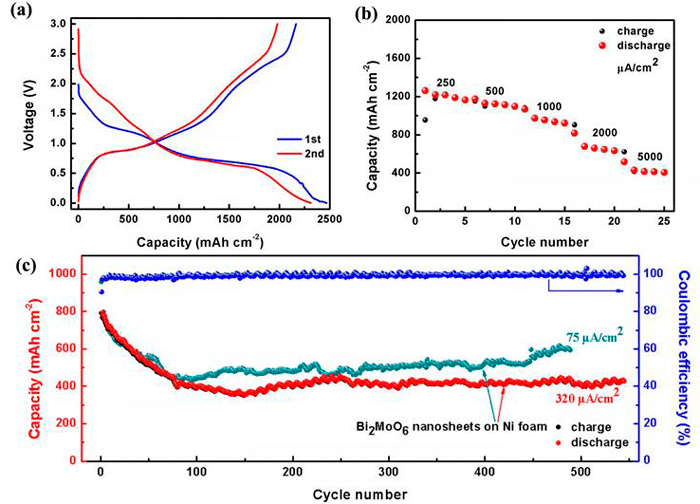 The effect of hierarchical Bi2MoO6 nanosheet arrays growing on 3D Ni foam synthesised by one-step template-free route has been investigated by a team form Northeastern University.
The effect of hierarchical Bi2MoO6 nanosheet arrays growing on 3D Ni foam synthesised by one-step template-free route has been investigated by a team form Northeastern University.
According to Northeasten, the obtained BNAs used directly as binder-free integrated electrode for Li-ion batteries (LIBs) exhibits a “super high” reversible discharge capacity of 2311.7 μAh/cm2, and an “excellent” cycle stability.
Commercial LIBs mainly use graphite as the anode material. The problem is graphite can hardly provide the high capacity and high energy density necessary to satisfy the demand required for high power application of the next-generation LIBs due to its low theoretical specific capacity.
In terms of their high capacity, lots of metal oxides have attracted great interest in recent years. However, most metal oxides have low conductivity, high desertion voltage and structural instability, which result in poor rate capability, low power density and poor cycling stability. These shortcomings limit the application of metal oxides as anode materials for LIBs.
Among the numerous metal oxides, Bi2MoO6 with high theoretical capacity (791 mAh/g) and low desertion voltage (<1.0 V) has been widely studied for its excellent photoelectric properties, but, there are few reports on the nanostructure Bi2MoO6 as anode material for LIBs, not to mention the Bi2MoO6 integrated electrode.
Thereafter, developing an effective strategy to prepare the Bi2MoO6 integrated electrode and then exploring their electrochemical performance toward lithium is of great importance, Northern says.
To tackle the issue of low intrinsic conductivity, inferior cycling stability for Bi2MoO6 as anode material, the researchers proclaim an effective strategy to the synthesis of hierarchical Bi2MoO6 nanosheet arrays (BNAs) on the 3D Ni foam by one-step template-free hydrothermal method.
The team says they found that BNAs-integrated electrodes exhibit excellent electrochemical properties (a super high reversible discharge capacity of 2311.7 μAh/cm2, more than 500 times of cyclic stability), when used as the anode electrode for LIBs.
The hope is that this work will pave the way for better performing LIBs with metal oxides as the anode material. The team believe it can improve the cycle stability and capacity of lithium-ion battery and expect it to be used in portable electronic devices in the future.

Fig. (a) are the galvanostatic charge-discharge curves of BNAs integrated electrode at a current density of 25 μA cm-2 . The 1st, 2nd discharge capacities of BNAs integrated electrode are 2471.5, 2311.7 μAh·cm-2 (1861.8, 1741.4 mAh g-1).
Fig. (b) reveals the rate capability of BNAs integrated electrode at current densities of 250, 500, 1000, 2000, 5000 μAh·cm-2 respectively. The discharge capacities are 1219, 1128, 972, 678, 430 μAh·cm-2(918.2, 849.7, 732.2, 510.7, 323.9 mAh g-1), respectively.
Fig. (c) shows the cycling stability of BNAs integrated electrodes. Reversible capacity of BNAs integrated electrodes can maintain a capacity of 410 μAh·cm-2 (308.8 mAh g-1, at a current density of 320 μAh·cm-2) after 600 cycles. When the current density was 75 μAh·cm-2, the electrode exhibits a high capacity of 600 μAh·cm-2 (451.9 mAh g-1) after 500 cycles. The above results show that the integration of active material and current collector can greatly improve the capacity, rate ability and cyclical stability of the battery.
Author
Bethan Grylls
Source: www.newelectronics.co.uk

